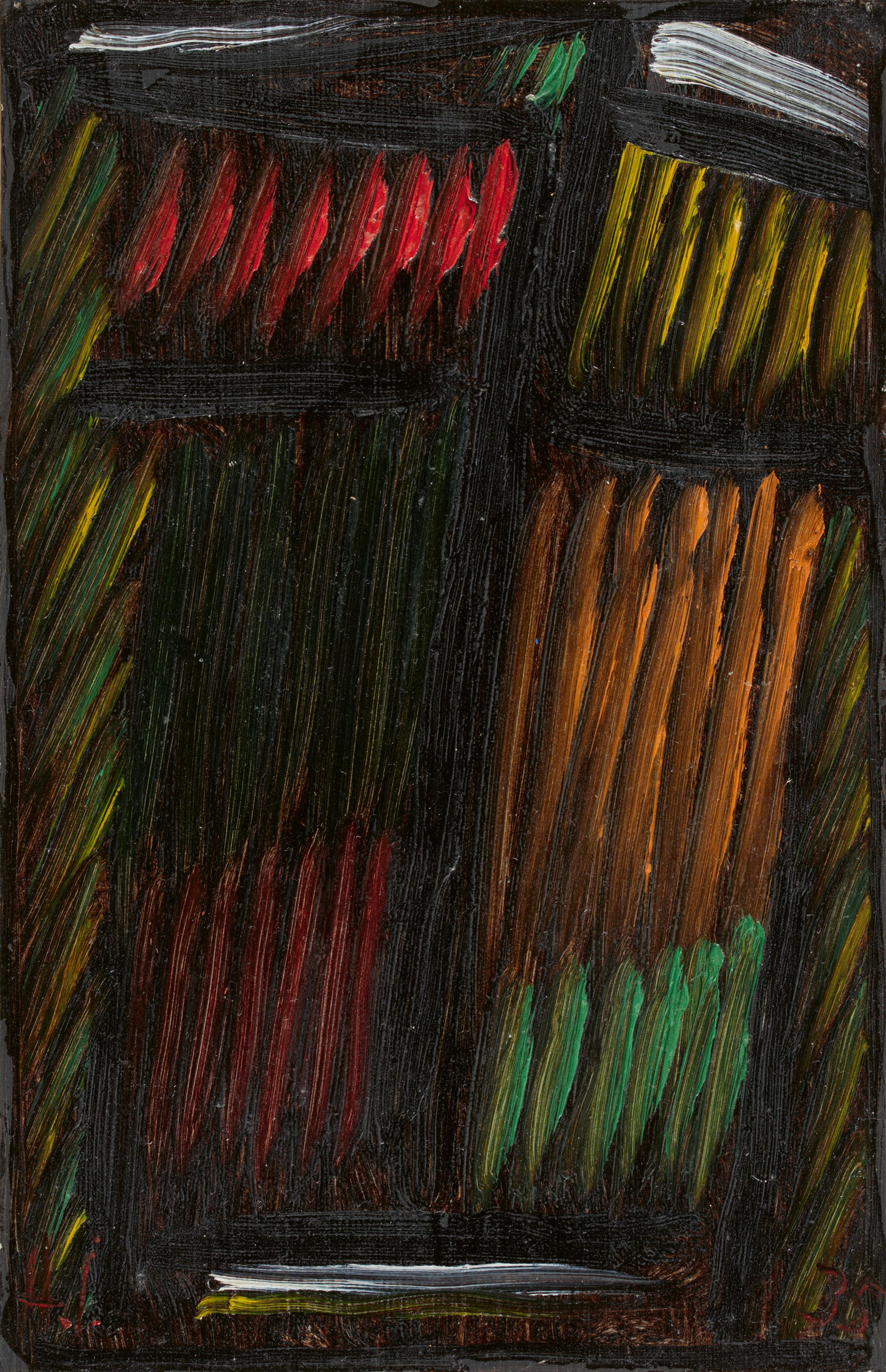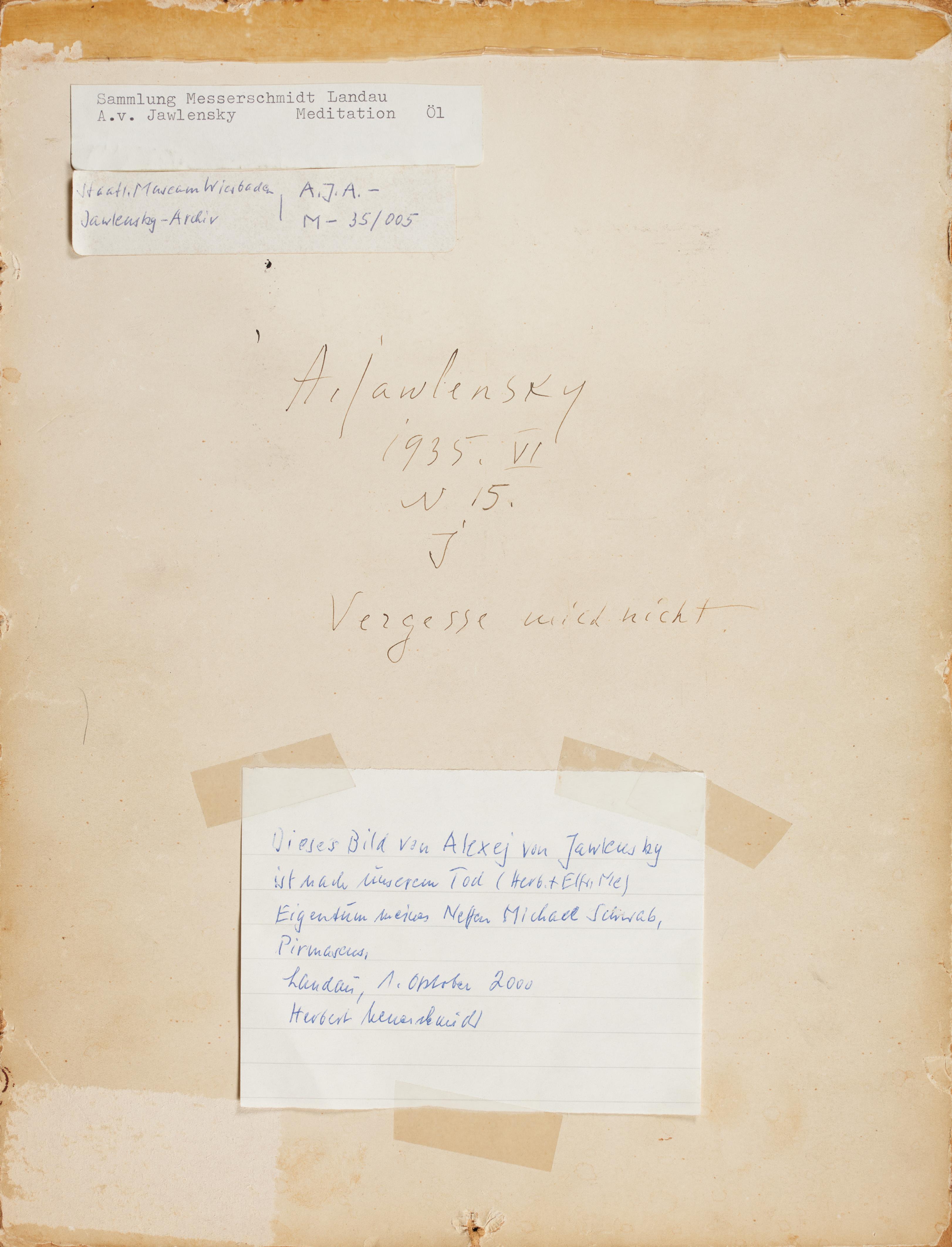Alexej von Jawlensky
Meditation. Vergesse mich nicht
1935
Oil on card, mounted to card support. 19 x 12.2 cm (card support 32.5 x 24.9 cm). Framed under glass. Monogrammed 'A.J.' in red lower left, dated '35' in red lower right. Verso signed, dated and inscribed 'A. Jawlensky, 1935.VI, N15., J' on card support as well as dedicatd 'Vergesse mich nicht'. - Very good condition with fresh colours. Upper edge of card support with traces of torn-off strip of paper, in addition slight light-stains.
Red, orange, yellow and green are the dominant colours in the little composition “Meditation: Vergesse mich nicht”, of 1935. This is the period in which Jawlensky was working with great intensity on his final group of works – as Europe steered towards a disastrous war, it had become nearly impossible for him to exhibit his work and he was suffering from rapidly worsening arthritis, making painting more and more difficult for him. Nonetheless, in isolation and with a great will to create, he succeeded in producing his final series, the Meditations: he painted these mostly postcard-sized, thoroughly abstract heads from around 1933 to 1937. “What is moving about them”, writes Ziglgänsberger, “is that they are directly connected with the end of his life and place his profound experience of life right before our eyes” (Roman Zieglgänsberger, Alexej Jawlensky, Cologne 2016, pp. 88–89). With the end of his oeuvre in mind, the subtitle becomes a sorrowful appeal: “Vergesse mich nicht” – forget me not.
The small format forces us to move up close to the picture. A network of black vertical and horizontal lines marks the closed eyes, the eyebrows, the mouth and the nose. Jawlensky has filled in the spaces between them with parallel strokes of luminous colours. He also suggests that the human individual vanishes in the end, seemingly disappearing into the darkness of the night, in one of his last letters to his friend Galka Scheyer: “I am working a great deal and so intensely […]. However, my experiences involve nothing noteworthy, and so I only paint what is in my soul, what lies deep within me, like a meditation. […] The pictures are mostly dark, but that pleases me. The colours are so mysterious, so deep; however, the colours of some of them are also very luminous, burning, but always somewhere from another world” (cited in Zieglgänsberger, p. 91). The Meditations show the isolation, powerlessness and tragedy of Jawlensky’s late period in Wiesbaden more clearly than any other group of works.
Catalogue Raisonné
Not recorded by M. Jawlensky/Pieroni-Jawlensky/A. Jawlensky Bianconi.
Certificate
The painting is listed in the Jawlensky Archive of the Städtisches Museum Wiesbaden under A.J.A.- M - 35/005.
Provenance
Staatliches Museum Wiesbaden, Jawlensky-Archiv, A.J.A., M - 35/005 (label verso); Collection Herbert und Elfriede Messerschmidt, Landau; Familiy possession,Pirmasens, since; Hauswedell & Nolte, Hamburg, Auction 395, 10 June 2006, lot 1305; Kunsthandel Thomas Schneider, Munich; Private property, North Rhine-Westphalia.




